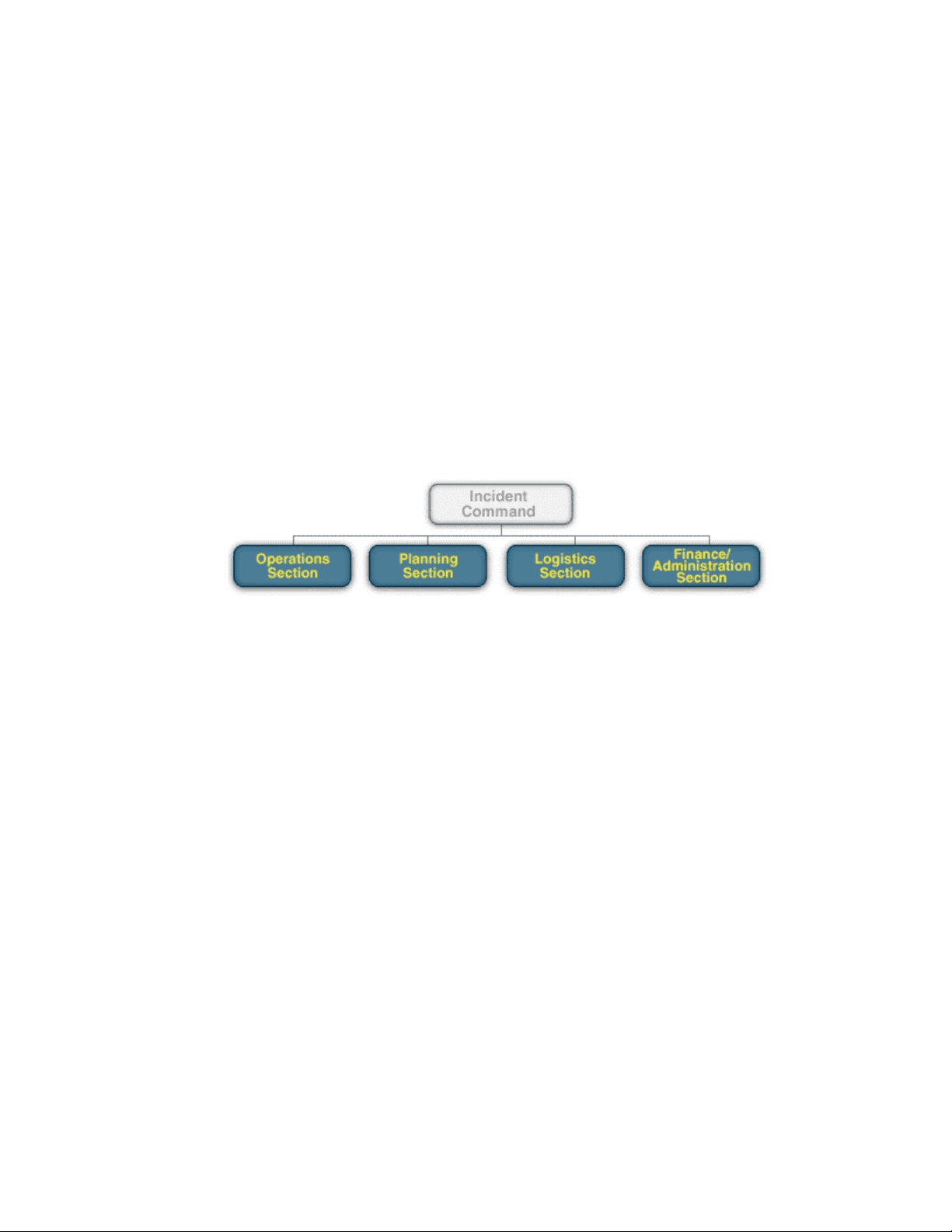
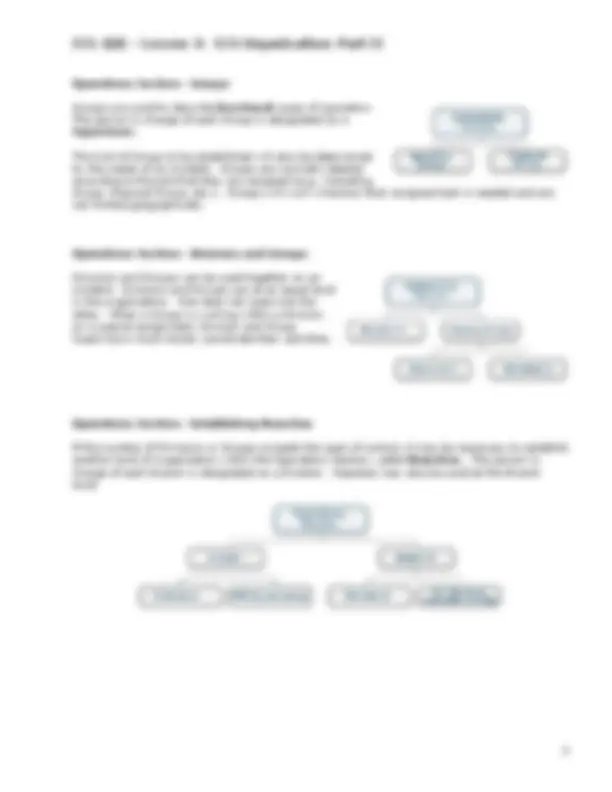
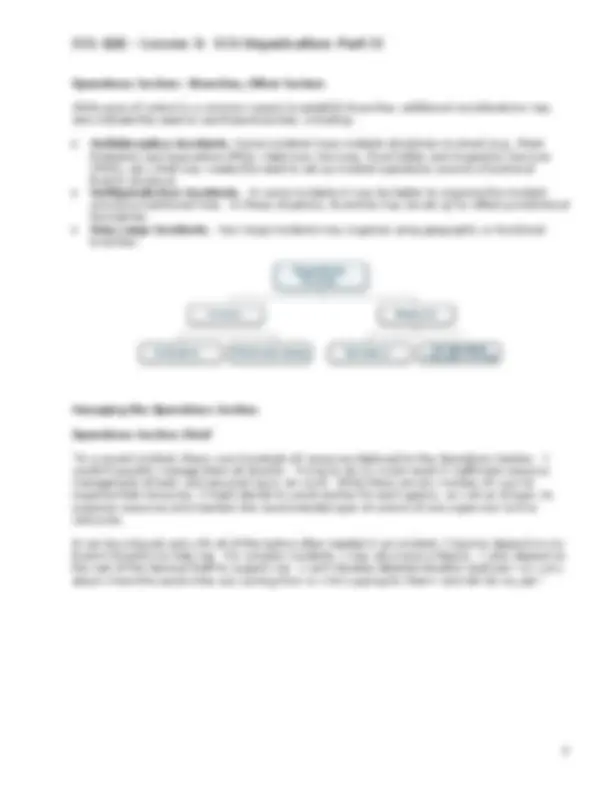
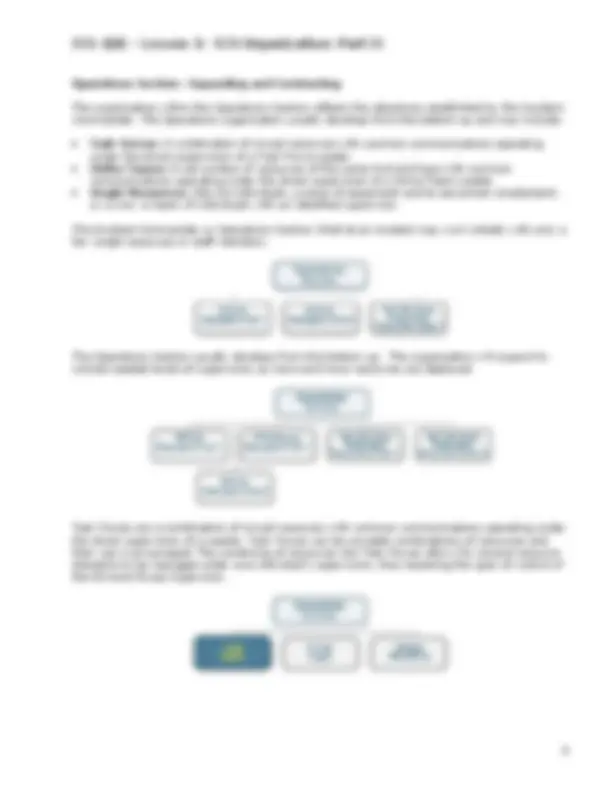

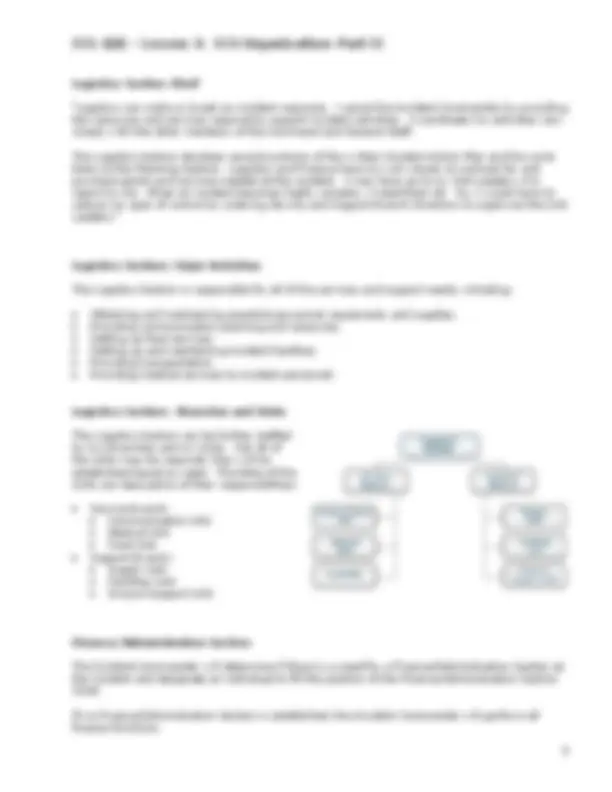
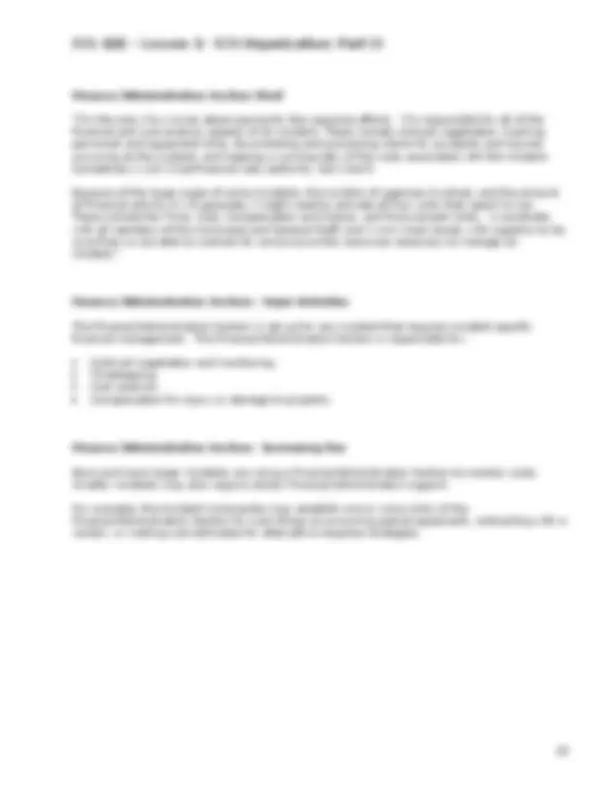


Study with the several resources on Docsity

Earn points by helping other students or get them with a premium plan


Prepare for your exams
Study with the several resources on Docsity

Earn points to download
Earn points by helping other students or get them with a premium plan
Community
Ask the community for help and clear up your study doubts
Discover the best universities in your country according to Docsity users
Free resources
Download our free guides on studying techniques, anxiety management strategies, and thesis advice from Docsity tutors
An overview of the roles and responsibilities of the General Staff in incident management, specifically focusing on the Operations, Planning, Logistics, and Finance/Administration sections. It covers the functions of Section Chiefs and Deputies, the use of Divisions, Groups, and Branches to manage resources, and the establishment of Task Forces and Strike Teams. It also introduces the Planning, Logistics, and Finance/Administration Sections and their respective roles and activities.
What you will learn
Typology: Summaries
1 / 11

This page cannot be seen from the preview
Don't miss anything!







Lesson Overview
The ICS Organization: Part II lesson introduces you to the:
This lesson should take approximately 30 minutes to complete. Remember, you must complete the entire lesson to receive credit.
General Staff
Expansion of the incident may also require the delegation of authority for the performance of the other management functions. The people who perform the other four management functions are designated as the General Staff. The General Staff is made up of four sections: Operations, Planning, Logistics, and Finance/Administration.
ICS Section Chiefs and Deputies
As mentioned previously, the person in charge of each section is designated as a Chief. Section Chiefs have the ability to expand their section to meet the needs of the situation. Each of the Section Chiefs may have a Deputy, or more than one, if necessary. The Deputy:
In large incidents, especially where multiple disciplines or jurisdictions are involved, the use of Deputies from other organizations can greatly increase interagency coordination.
Operations Section
Until Operations is established as a separate Section, the Incident Commander has direct control of tactical resources. The Incident Commander will determine the need for a separate Operations Section at an incident or event. When the Incident Commander activates an Operations Section, he or she will assign an individual as the Operations Section Chief.
Operations Section Chief
The Operations Section Chief will develop and manage the Operations Section to accomplish the incident objectives set by the Incident Commander. The Operations Section Chief is normally the person with the greatest technical and tactical expertise in dealing with the problem at hand.
Operations Section Chief
“I’m responsible for developing and implementing strategy and tactics to carry out the Incident Objectives. This means that I organize, assign, and supervise all of the tactical field resources assigned to an incident, including air operations and those resources in a staging area.
I work very closely and coordinate my activities with the other members of the Command and General Staff.”
Operations Section: Maintaining Span of Control
The Operations function is where the tactical fieldwork is done. Therefore, most incident resources are assigned to the Operations Section. Often the most hazardous activities are carried out there. Because of this, it is necessary to monitor carefully the number of resources that report to any one supervisor. The following supervisory levels can be added to help manage span of control:
Operations Section: Divisions
Divisions are used to divide an incident geographically****. The person in charge of each Division is designated as a Supervisor. How the area is divided is determined by the needs of the incident.
The most common way to identify Divisions is by using alphabet characters (A, B, C, etc.). Other identifiers may be used as long as Division identifiers are known by assigned responders.
The important thing to remember about ICS Divisions is that they are established to divide an incident into geographical areas of operation.
Operations Section: Branches, Other Factors
While span of control is a common reason to establish Branches, additional considerations may also indicate the need to use these Branches, including:
Managing the Operations Section
Operations Section Chief
“In a recent incident, there were hundreds of resources deployed to the Operations Section. I couldn’t possibly manage them all directly. Trying to do so would result in inefficient resource management at best, and personal injury at worst. While there are any number of ways to organize field resources, I might decide to use Branches for each agency, as well as Groups, to organize resources and maintain the recommended span of control of one supervisor to five resources.
It can be a big job and with all of the tactics often needed in an incident, I have to depend on my Branch Directors to help me. For complex incidents, I may also have a Deputy. I also depend on the rest of the General Staff to support me. I can’t develop detailed situation analyses—or worry about where the sandwiches are coming from or who’s paying for them—and still do my job.”
Operations Section: Expanding and Contracting
The organization within the Operations Section reflects the objectives established by the Incident Commander. The Operations organization usually develops from the bottom up and may include:
The Incident Commander or Operations Section Chief at an incident may work initially with only a few single resources or staff members.
The Operations Section usually develops from the bottom up. The organization will expand to include needed levels of supervision as more and more resources are deployed.
Task Forces are a combination of mixed resources with common communications operating under the direct supervision of a Leader. Task Forces can be versatile combinations of resources and their use is encouraged. The combining of resources into Task Forces allows for several resource elements to be managed under one individual’s supervision, thus lessening the span of control of the Division/Group Supervisor.
At some point, the Operations Section and the rest of the ICS organization will contract. The decision to contract will be based on the achievement of tactical objectives. Demobilization planning begins upon activation of the first personnel and continues until the ICS organization ceases operation.
Planning Section
The Incident Commander will determine if there is a need for a Planning Section and designate a Planning Section Chief. If no Planning Section is established, the Incident Commander will perform all planning functions. It is up to the Planning Section Chief to activate any needed additional staffing.
Planning Section Chief
“My job is to gather and analyze information so that we’ll be ready for tomorrow and the next day. I’m responsible for intelligence and information gathering, analysis, and dissemination. Also, our section manages the planning process and compiles the Incident Action Plan using input from the rest of the organization.
For large incidents, and when the Incident Commander has directed, we will develop a written Incident Action Plan. I also may be responsible for managing the activities of Technical Specialists who can be anyone, from anywhere, who knows anything that may be useful in responding to this incident.
I work closely with the Incident Commander and other members of the General Staff to be sure that information is shared effectively and results in an efficient planning process to meet the needs of the Incident Commander and Operations.”
Incident Action Plan
Every incident must have a verbal or written Incident Action Plan. The purpose of this plan is to provide all incident supervisory personnel with direction for actions to be implemented during the operational period identified in the plan.
Incident Action Plans include the measurable tactical operations to be achieved and are prepared around a timeframe called an Operational Period. At the simplest level, all Incident Action Plans must have four elements:
Planning Section: Major Activities
The major activities of the Planning Section may include:
Planning Section: Units
The Planning Section can be further staffed with four Units:
In addition, Technical Specialists who provide special expertise useful in incident management and response may also be assigned to work in the Planning Section. Depending on the needs, Technical Specialists may also be assigned to other Sections in the organization.
Logistics Section
The Incident Commander will determine if there is a need for a Logistics Section at the incident, and designate an individual to fill the position of the Logistics Section Chief. If no Logistics Section is established, the Incident Commander will perform all logistical functions. The size of the incident, complexity of support needs, and the incident length will determine whether a separate Logistics Section is established. Additional staffing is the responsibility of the Logistics Section Chief.
Finance/Administration Section Chief
“I’m the one who worries about paying for the response efforts. I’m responsible for all of the financial and cost analysis aspects of an incident. These include contract negotiation, tracking personnel and equipment time, documenting and processing claims for accidents and injuries occurring at the incident, and keeping a running tally of the costs associated with the incident. Sometimes I wish I had financial veto authority, but I don’t.
Because of the large scope of some incidents, the number of agencies involved, and the amount of financial activity it will generate, I might need to activate all four units that report to me. These include the Time, Cost, Compensation and Claims, and Procurement Units. I coordinate with all members of the Command and General Staff, but I work most closely with Logistics to be sure that we are able to contract for and procure the resources necessary to manage an incident.”
Finance/Administration Section: Major Activities
The Finance/Administration Section is set up for any incident that requires incident-specific financial management. The Finance/Administration Section is responsible for:
Finance/Administration Section: Increasing Use
More and more larger incidents are using a Finance/Administration Section to monitor costs. Smaller incidents may also require certain Finance/Administration support.
For example, the Incident Commander may establish one or more Units of the Finance/Administration Section for such things as procuring special equipment, contracting with a vendor, or making cost estimates for alternative response strategies.
Finance/Administration Section: Units
The Finance/Administration Section may staff four Units:
Not all Units may be required; they will be established based on need.
Lesson Summary
You have completed the ICS Organization: Part II lesson. This lesson addressed the:
The next lesson will provide an overview of the features and principles of ICS.